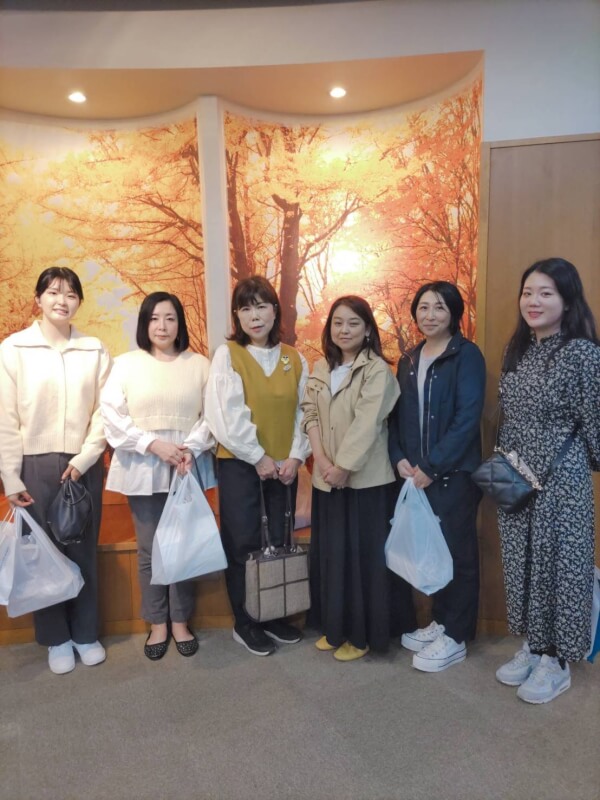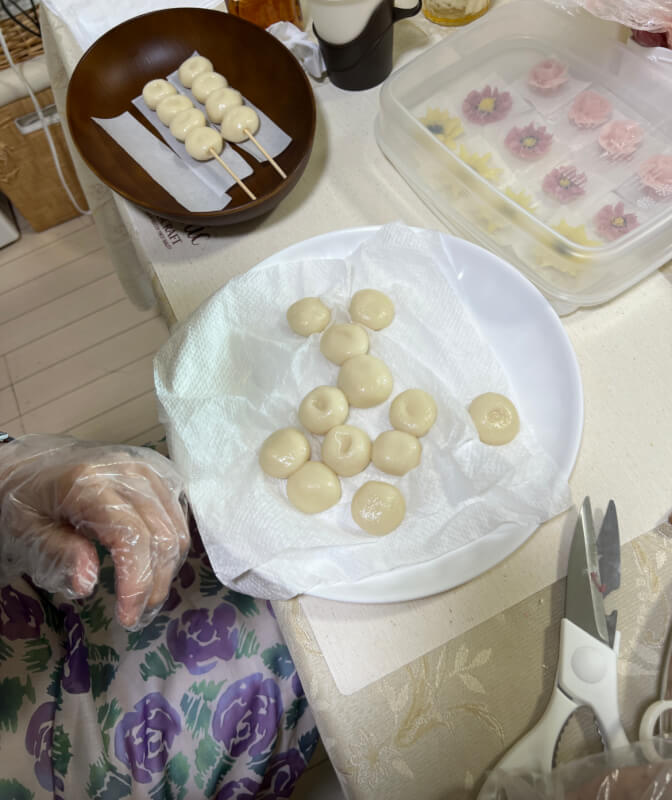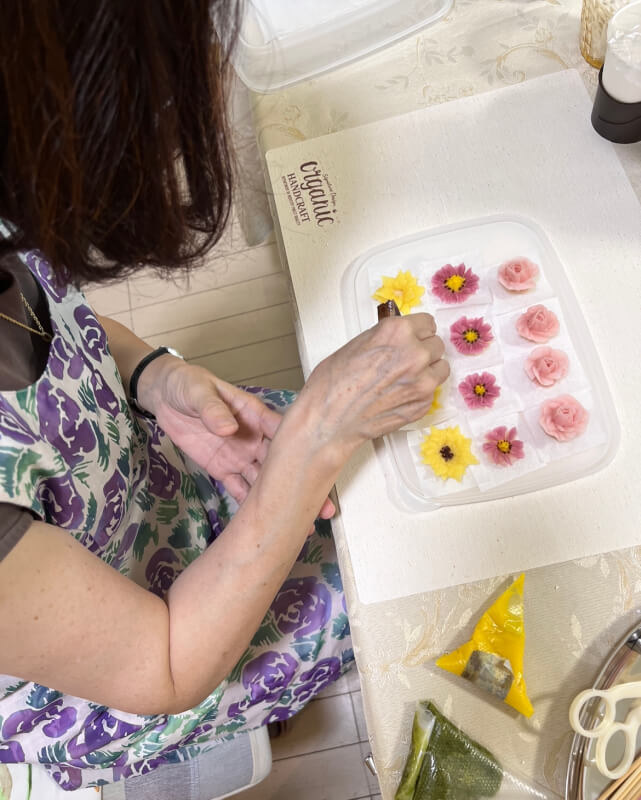![[2h]Tokyo Kawaii Sweets Making Class: Learn to Make Traditional Japanese Desserts](http://airkitchen.me/picture/experience/10211/2.png)


Hana Dango Make healthy dango using tofu. I went back to my childhood and made it, rolled it into a dumpling, and then boiled it. While it is cooling down, make flowers using ``Anko Cream'', which is colorfully colored ``White Bean Bean Paste''. I will carefully teach you how to make red bean paste flowers. Thread the cooled dango on a skewer and decorate the top with lots of red bean paste flowers. The finished product is very beautiful and is called ``KawaII.'' Hanaohagi Mochi is made by mixing rice and black rice (rice that Japanese people ate in ancient times) and cooking it, then pounding the rice to make mochi. Cover it with whipped "white bean paste". This is the foundation. Separately, decorate the top by making flowers using ``red bean paste cream'' which is colorfully colored ``white bean paste''. When lined up, these look gorgeous like a flower garden. of course! ``KawaII'' Flower cupcake This is a cake, but all the decorated flowers are colored with ``white bean cream.'' The base cake is chocolate flavored. A marriage of chocolate and red bean paste. I made some very delicious sweets. I will carefully teach you how to make ``Anko'' flowers. It will definitely turn out well, and you will definitely be able to take photos that you can be proud of. Please come and have a first-time experience that will be hard to believe that you made it while traveling.
As is common to all sweets, the main task that guests must do is ``making red bean paste flowers'' by coloring white bean paste. The basics of making flowers are the same as decorating with cream. Use a piping bag and a kana spout, and the cream inside is not cream but an anko paste. Anko paste is easier to handle than cream and will not melt. No strength is required, and there are no difficult rules or processes. It is a very natural and natural material, so you can relax and experience it.

My activities include one-off lessons, but on a daily basis I run a circle where I teach repeat students how to make flowers using colored paste on white bean paste.

This is a dango, but the healthy ingredient tofu is mixed with dango flour to give it a fluffy and chewy texture. After making the dumplings yourself, you boil them as if you were a child again. A delicious rice cake will be completed.

It may seem difficult at first glance, but I will teach you in a well-ordered manner so that you can finish each single lesson in two and a half hours. So anyone can easily enjoy and receive highly satisfying lessons.

The finished product will look like this. We made red bean paste flower dumplings with lots of colorful flowers on them. As a teacher, I have studied a lot while teaching many students and have come up with the idea of a single lesson that doesn't take too much time and doesn't make you tired.

Since December is the Christmas season, you can also learn how to make red bean paste cupcakes like this one. It's really kawaii. Please come and experience it.

Another of my activities is teaching children traditional Japanese ingredients. I want people to eat more red bean paste, which is very healthy and good for the body. That's why we also offer cooking classes for children.

The trial lesson consists of sweets, so there will be nothing left after you finish eating them, but please share the photos with your friends on Instagram or Facebook. I'm sure you'll be surprised by these fresh, never-before-seen Japanese sweets. Please join us for a lesson to enjoy your trip.

satoko
★★★★★ (1)nice to meet you. I created a new style of Japanese sweets based on the concept of ``Kawaii'' in Japanese casual Japanese sweets such as ``Dango'' and ``Ohagi.'' I made white bean paste with colored red bean paste and squeezed flowers and frills into it to create a gorgeous and colorful decoration. is making. We would like people from overseas to try ``Anko'', a traditional Japanese ingredient. Also, ``red bean paste'' is a very healthy and good-for-you ingredient, and compared to cream, it has fewer calories. ``KawaII'' and ``delicious'' and ``healthy ingredients.'' We would like you to experience making Japanese sweets, such as the delicate decorations that can only be experienced in Japan. The venue is a 6-minute walk from Magome Station on the Toei Asakusa Line. Magome Station is 5 minutes from Gotanda Station on the Yamanote Line.
The closest station
Magome Station
How to get to the station?
From Gotanda Station: 5mins
Free pick up service
This host can pick up you for free from the closest station!
Exact location provided after booking.
Andrea, Mexico
★★★★★My experience with Satoko was great! Her English is still in progress, but she got her son to help with communication, so it wasn't and issue. She has been teaching this class for years and it shows. Her explanations are clear, and despite my worries, I was able to get decorations that exceeded my expectations. Also, her dangl recipe is very tasty, and she's a great conversationalist.
Aug 2024
{{item.guest_name}}, {{item.nationality}}
{{item.comment}}
{{item.month}} {{item.year}}

Response from satoko
{{item.host_review_reply}}
Up to 3 people can join satoko's cooking class.
It costs 6000 per person.
Please go to Magome Station which takes 5 mins from Gotanda Station. Then satoko (host) will pick you up there!
Duration of this cooking class is 2.5 hours.
You will receive the confirmation within 24 hours.
We accepts these cards on airKitchen.
Cancellations up to 48 hours prior to the class begins will be fully refunded by the airKitchen cancellation policy.